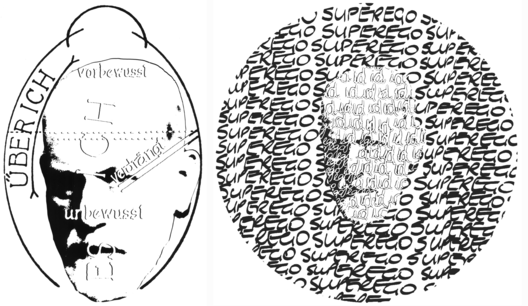Sigmund Freud1856–1939
Freud established psychoanalysis as a treatment of neuroses, and developed a theory of mind that emphasised unconscious motivation. As such he challenged many of the intellectual icons of his day, particularly those associated with infantile sexuality and personality development. Freud devised numerous neologisms that are now part of the fabric of our language. Perhaps his greatest impact has been on the popular conception of psychology rather than upon the subject itself. His methods in psychopathology did not draw upon his neurological training nor did his theoretical concepts reflect his exposure to the mechanistic neurophysiology of his day. Most concepts in Freudian theory have a long and well-defined heritage, but Freud assembled and reassembled them in novel ways. His interests in hysteria were stimulated during a year in Paris working with Charcot, where Freud’s ideas about the sexual aetiology of neuroses had their genesis. He continued his investigations with Breuer in Vienna, and his analysis of Anna O’s case convinced him that sexual conflicts lay at the basis of hysteria. Hypnosis was not effective for all patients, and he developed Breuer’s talking cure into the method of free association. Patients lay on a couch and were instructed to say whatever came into their mind, without any selection or censorship. The method was taken to expose, indirectly, repressed memories and desires. These could also emerge in dreams, the interpretations of which assumed great importance in Freud’s theory of unconscious (unbewusst) motivation: he described dreams as “disguised fulfilments of repressed wishes”. Three forces and their interactions fashioned behaviour, and he once displayed these in graphical form: the id (Es) represents unconscious, biological desires which are partially repressed (verdrängt) by the superego (Überich); a resolution is achieved by the preconscious (vorbewusst) ego (Ich), which also interacts via the senses with the real world (indicated by the small bump on the top of the diagram). These concepts were initially formulated in 1923, although the diagram did not appear until ten years later. The portrayal of Freud on the left is derived from a photograph taken at the same time (1922) that his theory of mind was proposed, and he is enclosed within it. His models of motivation and personality affected both art and literature in the first half of the 20th century. It is essentially mechanistic, and it is often represented graphically in terms of concentric or overlapping circles, and it is within such a graphical scheme that his portrait is presented on the right. The overbearing and enclosing effects of socialization define the superego; the ego, that part of the self presented to the external world, is orderly and well-formed, unlike the id, which is primitive and generally unseen. These (oversimplified) characteristics of his system are also echoed in the scripts used: the dominant and aggressive forms of “superego”, the neat, presentable “ego”, and the unschooled “id”, which was written with the left hand. Freud was born in Freiberg, Moravia, and moved to Vienna while still a young boy. He studied medicine at the University of Vienna, in the course of which he attended classes in philosophy given by Brentano, but his greatest influence was the physiologist Ernst Brücke. He was a prize pupil in neurology, gaining a small grant to visit Charcot in 1885, thereby changing his life and the course of abnormal psychology. Freud’s band of ardent acolytes were not without their disagreements, particularly over the importance of infantile sexuality.
